

Ready, Aim, Shoot
Easy Changes to Improve your Quilt Photography
Copyright 2009 Paula Furgason, Guest Author
Has your prizewinning quilt from your local show ever been rejected from the next show you entered? Having trouble getting a great picture to remember that quilt you’re giving away? You know you’ve created a great piece. Why doesn’t the photograph ever do it justice?
You may want to hire a professional photographer who will use all kinds of special lighting and equipment to solve the problem, and that may be the best option in some cases. But, there are some minor adjustments you can make with your digital point and shoot that can help refine your photos. A few very simple changes in your set up can make a noticeable improvement in pictures of your quilts.
Watch Your Back
The simplest thing to do when shooting your quilt, artwork, garden, or grandkids is to look at the background and other distractions that don’t belong in your photo. Your brain will shut them out when looking with your eyes, which focus on what you want to see. The camera, though, will not discriminate and will include everything within its view.
The photograph on the left was taken on the auto setting with no thought given to the background. The human eye saw the doll; the camera saw everything. Not only is the background cluttered, but the light coming through the glass doors overexposes the background and underexposes the doll.
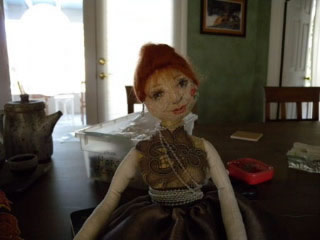 |
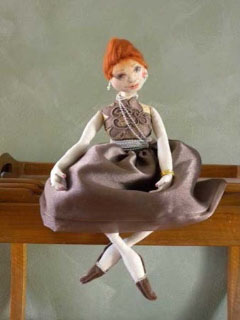 |
The photo on the right was taken in the same room a couple of minutes later, also on the auto setting. The only difference is the direction of the light, and of course the background.
The same holds true for photographing quilts. You may be tempted to have someone snap a picture of your quilt with you standing in back of it while you hold it, or with you next to it showing off your work. Go for it! Keep these for your scrapbook and show them to all your friends. Then, photograph the quilt and only the quilt for submission and documentation, and showing-off your masterpiece.
Use your display wall, and be sure you hang your quilt over a contrasting background. Solid black or white often work, but sometimes a contrasting color is needed so there is an obvious difference between the outside border and the background. This is especially helpful if you later crop the image in photo software. Don’t have a display wall? A sheet of foam core serves the same purpose.
 |
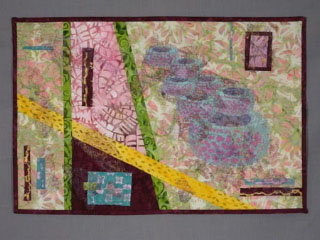 |
Notice how the binding in the photo on the left is absorbed into the background. When the quilt is moved to a gray background, the binding stands out so not only does a jury see the edges are properly finished, but the photo can easily be cropped without distorting the edges.
Get Centered
Hang the quilt vertically, and be sure your camera is positioned at the center of the quilt and parallel to the camera or it may appear distorted. A tripod is useful for this but not necessary. Set the zoom near the middle, not too much toward telephoto or too much toward wide angle. Either may distort your quilt.
 |
 |
The photo of the quilt on the left was taken on the floor. Since the camera was held at an angle, the quilt appears wider at the bottom. The photo of the quilt on the right was taken on the display wall with the camera held at the center of the quilt.
Not So Gory Details
Often an application for a show or exhibit will require a detail shot. Many cameras now include a close-up mode. Check your user’s manual and take advantage of this feature! Otherwise, the details are likely to be blurry, like in the photo on the left. The photo on the right was shot in close-up mode, providing an up-close, in-focus photo.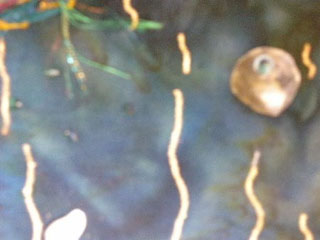 |
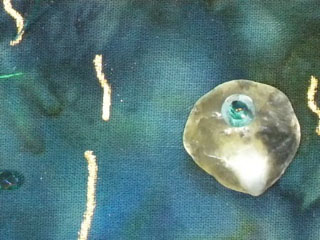 |
Show Your True Colors
Does all that beautiful fabric you so carefully chose in the quilt shop or hand-dyed to that perfect color look washed out in the photo? Details missing? There’s a good chance the problem is the lighting. The best source for photographing your quilts is natural daylight, and the best place to shoot is indoors, or at least in a protected area away from wind, rain, blowing leaves, insects, or other elements or critters that may disturb your photo session. Resist the temptation to add artificial light, which will mix your light sources and may contribute to the color problem. Remember, flash is artificial light, so turn it off! It can wash out the details. If your photo turns out blurry, set the camera on a steady surface or use a tripod.
Balancing Act
If you can’t get enough natural light, use only one type of artificial light. That is, don’t bring an incandescent light to a room lit by fluorescent, or vice- versa. If your camera has a white balance (WB) adjustment, setting it according to the available light source should help keep your colors true. Even my basic cell phone has this feature, although I wouldn’t recommend using most camera phones for photographing art. Cameras vary in WB features, so it’s worth spending a few minutes with your user's manual to take advantage of it. These examples show what a difference the correct WB setting can make.
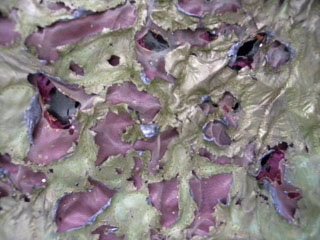 |
 |
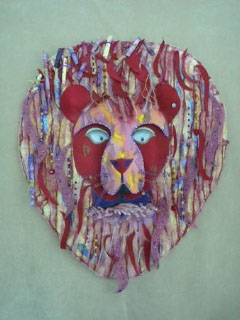 |
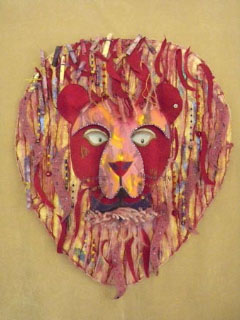 |
The photos on the left were taken with the camera set on Auto. The photos on the right were taken with the WB set to match the lighting in the room, and provide a much better representation of color. [Ellen's note: Wow, does this ever make a difference!]
Once the quilt is hung properly on a contrasting background in the appropriate light, the camera is aimed dead center, the flash is off and the right white balance is set, take your shot. Look at it on the camera’s monitor, and then on your computer or your TV screen. Is it in focus? If not, make the adjustments and try again. No matter how much you love editing your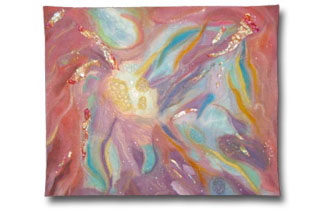 photos later, there’s no cure for out of focus. Once you are happy with your photo, THEN take down your set up.
photos later, there’s no cure for out of focus. Once you are happy with your photo, THEN take down your set up.
With only a little more effort than it takes to point and shoot, your quilt photos can really start to shine. Playing with your camera can be almost as much fun as playing with fabric!
For more information on white balance, visit www.kenrockwell.com/tech/whitebalance.htm
All artwork and photographs copyright Paula Furgason.

Paula Furgason is an award winning fiber artist, doll artist, and amateur photographer. Her art has been displayed nationally and she teaches both fiber art and doll making. Learn more about Paula on her blog.
©2007-2012 Ellen
Lindner
|